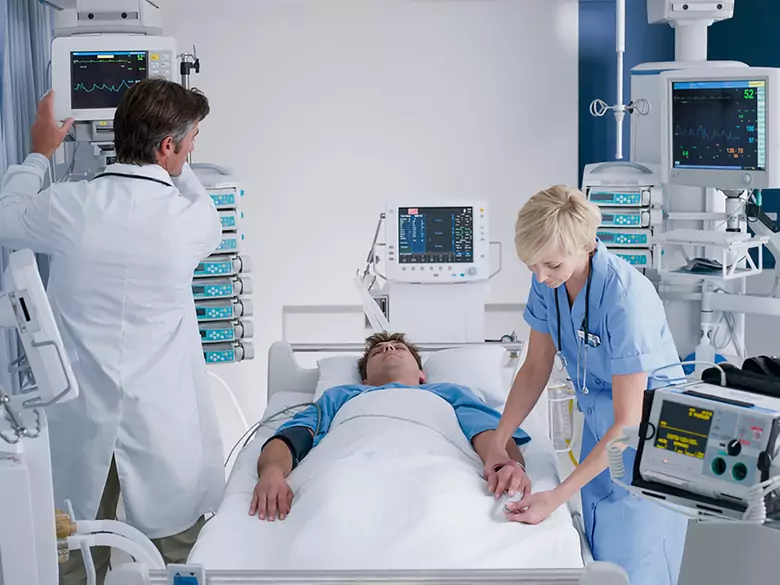Third part of an article discussing various urinary tract examinations and the basic principles of interpreting the results of these examinations. The most important imaging examinations such as medical US, urography, cystography, computed tomography and scintigraphy are discussed. In addition, the principles of renal biopsy are presented.
SCYHTNYGRAPHY OF THE KIDNEYS
The examination involves the administration of a tracer (contrast), which is recorded by a device called a gammacamera. The scintigraphic examination requires no special preparation for the child. The uptake of the tracer by the kidneys and the subsequent excretion of the tracer allows, as in urography, the assessment of kidney function, all stages of urine production and excretion.
The distribution of the tracer within the kidney makes it possible to observe which parts of the kidney (post-inflammatory scarring) or even which kidney is not excreting correctly. The examination is more accurate than urography when it comes to assessing kidney function, as it allows an assessment of the proportion of each kidney's contribution to urine production and body clearance. During the examination, the child also lies on his or her back, the tracer is administered intravenously, and images are recorded several times at intervals of 10-30 minutes, including after urination.
BIRPSIA OF THE NERSE
This is an invasive examination involving the percutaneous removal of a section of the kidney with a needle for microscopic evaluation. Both written consent from parents and guardians and a child over 16 years of age are required for the procedure. It can be performed under local anaesthesia (this applies to older children who will accept this form of anaesthesia) or under general anaesthesia. Examination of the kidney biopsy allows an accurate assessment of the cellular structure of the kidney, which is particularly necessary in the diagnosis of urinary diseases such as nephrotic syndrome, glomerulonephritis, renal failure of unclear cause, proteinuria and haematuria.
COPYRIGHT
Paediatric nephrology. Pod red. Maria Sieniawska and Teresa Wyszyńska. Biblioteka Lekarza Specjalisty Warsaw 2003.
S.Pawelski, S.Maj: Norms and diagnosis of internal diseases. PZWL 1993.
Behrman R. et al: "Handbook of Paediatrics" 1996.









